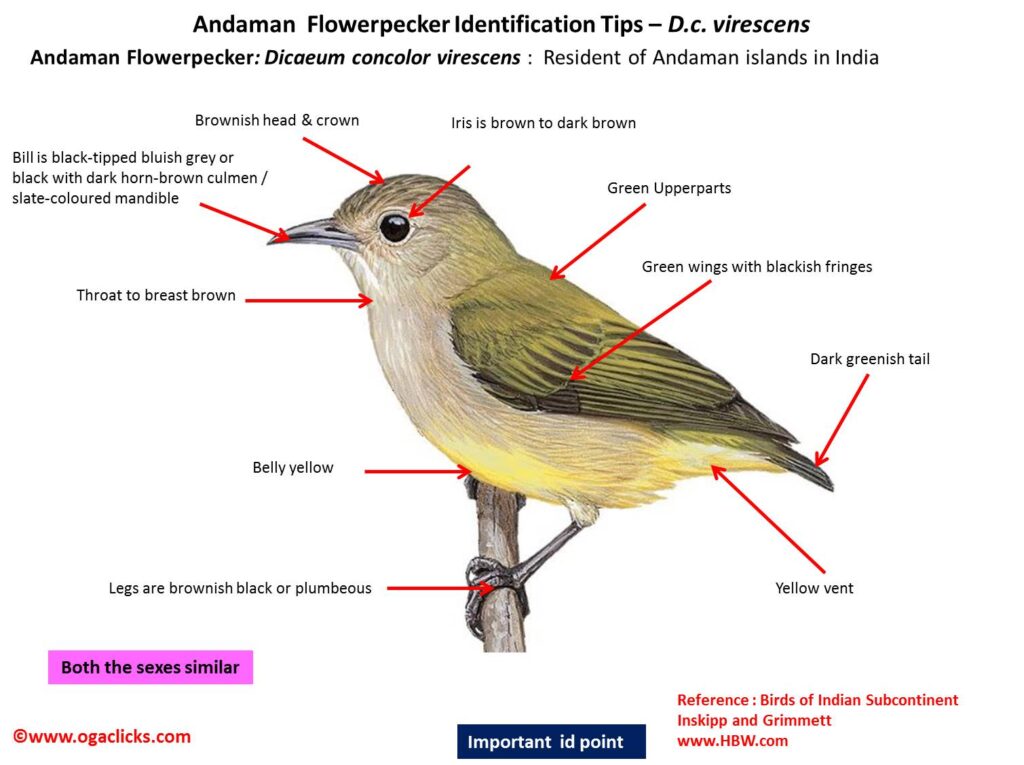
Andaman Flowerpecker Dicaeum virescens
Etymology:
- Dicaeum: Greek word dikaion supposedly an Indian bird
- Virescens: Greenish
Distribution in India: Resident of Andaman Islands.
Description: Size of 7·5–9 cm; 4–6 g. The adult is greener above, with speckled crown, pale lores but no white on forehead and almost no supercilium. It is brownish on head, back and scapulars, yellow on rump, tail is glossy black & tipped white, throat and belly are dusky yellow, vent is yellow. The iris is brown to dark brown; bill is black-tipped bluish grey or black with dark horn-brown culmen or slate-coloured mandible; legs are brownish black or plumbeous. Both the sexes are similar. The juvenile is browner, duller and less olive than adult, with underparts more ashy, also lacks dark feather centres on crown; part of mandible yellowish or orange, or base of both maxilla and mandible pale.
Habitat: It is found in various forest types, including evergreen, moist deciduous, peat swamp, submontane heath and montane forests, secondary growth, plantations and other cultivation, groves of trees in open country, and trees around habitation.
Food habits: It eats Insects, spiders, figs, fruits, and nectar of mistletoes. It forages in all storeys, but most frequently in canopy. It occurs singly, sometimes in pairs or in small groups.
Breeding habits: They breed in Mar–Sept. Both the sexes build nest, incubate eggs, tend nestlings and care for young. The nest is a very small hanging purse, constructed of fibres and vegetable down, above ground in tree or tall bush. They lay a clutch of 2–3 eggs.